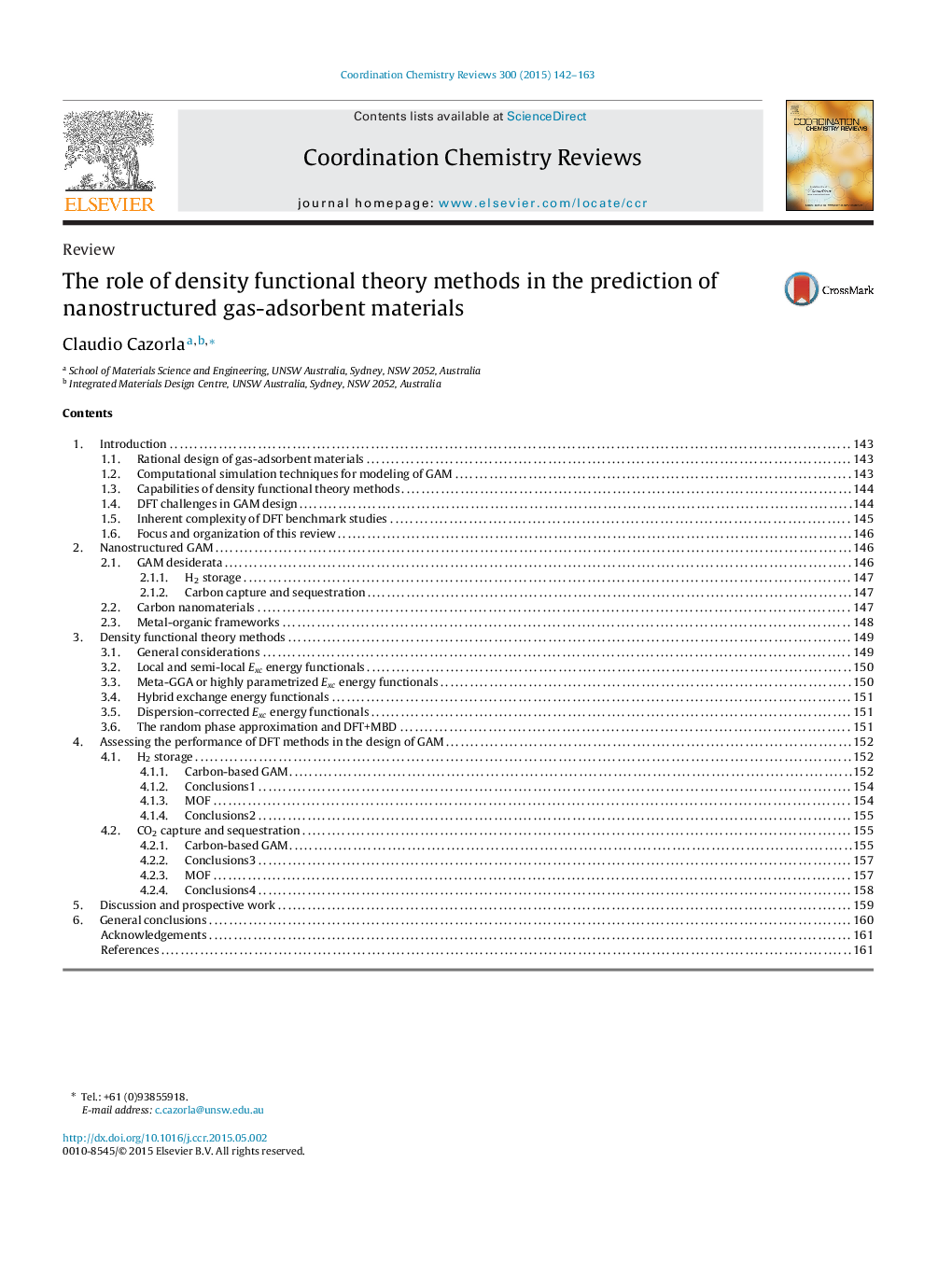| Article ID | Journal | Published Year | Pages | File Type |
|---|---|---|---|---|
| 1300926 | Coordination Chemistry Reviews | 2015 | 22 Pages |
•Electronic long-range exchange and correlations are decisive in the adsorption of gas molecules.•LDA and GGA functionals are not recommended for modeling of gas adsorption phenomena.•DFT benchmark studies performed in model cluster systems cannot be generalised straightforwardly to real extended materials.
With the advent of new synthesis and large-scale production technologies, nanostructured gas-adsorbent materials (GAM) such as carbon nanocomposites and metal-organic frameworks are becoming increasingly more influential in our everyday lives. First-principles methods based on density functional theory (DFT) have been pivotal in establishing the rational design of GAM, a factor which has tremendously boosted their development. However, DFT methods are not perfect and due to the stringent accuracy thresholds demanded in modeling of GAM (e.g., exact binding energies to within ∼0.01 eV) these techniques may provide erroneous conclusions in some challenging situations. Examples of problematic circumstances include gas-adsorption processes in which both electronic long-range exchange and nonlocal correlations are important, and systems where many-body energy and Coulomb screening effects cannot be disregarded. In this critical review, we analyze recent efforts done in the assessment of the performance of DFT methods in the prediction and understanding of GAM. Our inquiry is constrained to the areas of hydrogen storage and carbon capture and sequestration, for which we expose a number of unresolved modeling controversies and define a set of best practice principles. Also, we identify the subtle problems found in the generalization of DFT benchmark conclusions obtained in model cluster systems to real extended materials, and discuss effective approaches to circumvent them. The increasing awareness of the strengths and imperfections of DFT methods in the simulation of gas-adsorption phenomena should lead in the medium term to more precise, and hence even more fruitful, ab initio engineering of GAM.
